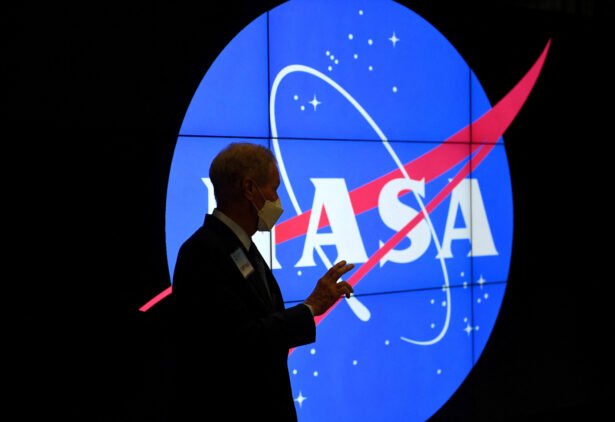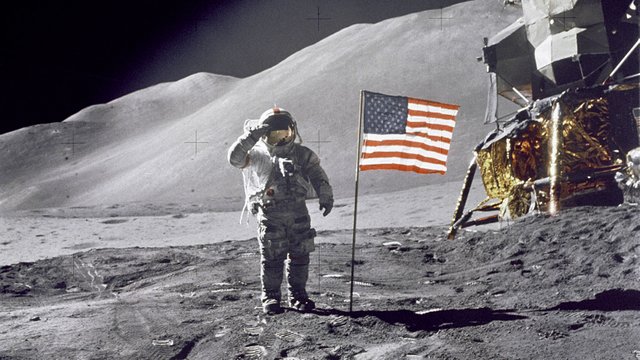NASA wrapped up its fourth wet dress trial of the Space Launch System history, during which time ground brigades achieved a number of crucial test objects. That said, an undetermined hydrogen leak averted a full completion of the test, in a development that could further complicate the Artemis 1 charge schedule.

history’s wet dress trial ended at 737p.m. ET, with ground brigades successfully managing to fill both rocket stages with supercold liquid oxygen and liquid hydrogen forces commodity they had n’t been suitable to achieve during the first three trial attempts. The brigades also rehearsed a terminal preamble, but the timepiece was stopped at T- 29 seconds rather of the intended T- 10 alternate mark. The rocket has been drained of its fuel and it remains standing on Launch Pad 39B at Kennedy Space Center in Florida as launch regulators determine coming way.

A hydrogen leak was the reason for terminating the preamble precociously, in a decision made before on Monday, NASA officers told journalists moment. Those missing 19 seconds may not sound like much, but the final moments previous to launch involve a ton of moving corridor. It thus can not be said that NASA performed a full wet dress trial of its mega Moon rocket. NASA officers are n’t yet ready to say if a fifth wet dress trial will be needed or if SLS is eventually ready for its initial launch, a charge known as Artemis 1. The forthcoming Artemis operations could see a man and woman land on the lunar face by 2025, the construction of the first lunar space station, and a long- awaited endless presence at and around the Moon but it all starts with SLS.
That the rocket’s tanks were completely loaded with forces and a preamble brought so close to the finish line — and all the effects that have to be ahead and in- between — is still a big deal. At moment’s media teleconference, Tom Whitmeyer, NASA’s deputy associate director for Common Exploration Systems Development, said “ these are really important effects that we wanted to see. ” Whitmeyer described the jumbo rocket as a complicated jigsaw mystification, and the lately concluded wet dress means “ we now have a really good idea of what the mystification looks like, ” but a many unidentified outstanding particulars need to be anatomized. Ground brigades also “ got ta chase the leak, ” he said.
Indeed, the hydrogen leak ruined an else uneventful launch trial. This leak happed as forces were being poured into the rocket; crews sourced the problem to the core stage tail service mast umbilical hot dissociate, the point where the line connecting the rocket and the mobile launcher come separated during launch. During the wet dress, ground brigades worked feverishly to resolve the issue by warming the quick dissociate and alsore-aligning it to form a tight seal, but it did n’t work.

Now, under a normal launch script, such a leak would ’ve really redounded in a mite, but launch regulators wanted to keep the trial going. They “ developed a plan to mask data associated with the leak that would spark a hold by the ground launch sequencer, or launch computer, in a real launch day script, to allow them to get as far into the preamble as possible, ” according to a NASA statement. This allowed for a trial of the terminal count( the final 10 twinkles of a preamble), including a crucial step in which the ground launch sequencer is switched to the automatic launch sequencer controlled by SLS’s flight software. But for safety reasons, the preamble had to be stopped shortly after the T- 33 alternate transition, owing to the hydrogen bleed line leak issue, as the NASA officers explained at the press conference.
The words “ success ” and “ successful ” were thrown around freeheartedly during moment’s press briefing, but it’s fair to say that( 1) the fourth wet dress trial was deficient( indeed if slightly) so,( 2) the rocket would n’t have launched, had it been anon-rehearsal script, and( 3) the undetermined hydrogen leak is easily a problem that needs work. These enterprises away, the plethora of issues that agonized the first three wet dress attempts appear to have been completely resolved, and the Orion capsule is performing “ negligibly, ” as the NASA officers told me during the briefing.
Charlie Blackwell- Thompson, Artemis launch director, said the brigades got through numerous test objects, but some objects weren't met during the terminal count. She and her associates need to estimate the data similar that they can come back with a recommendation on how to do, Blackwell- Thompson said, saying no decision has been made about whether another launch trial is needed. Mike Sarafin, Artemis charge director at NASA, chimed in, saying the brigades will look “ at the pitfalls of not performing another test. ”
I ’m a practice- makes-perfect kind of joe, so my own feeling is that NASA should perform a fifth test. SLS is being deposited as a idler vehicle for the coming decade or two, so another test does n’t feel like a big deal, especially given that the rocket is still on the launch pad and because only a many final details need to be ironed out. A number of Artemis launch windows remain available for NASA, including openings in late August and late September. NASA officers said they ’re looking to meet with the press latterly this week, so we may learn the answer in short order.